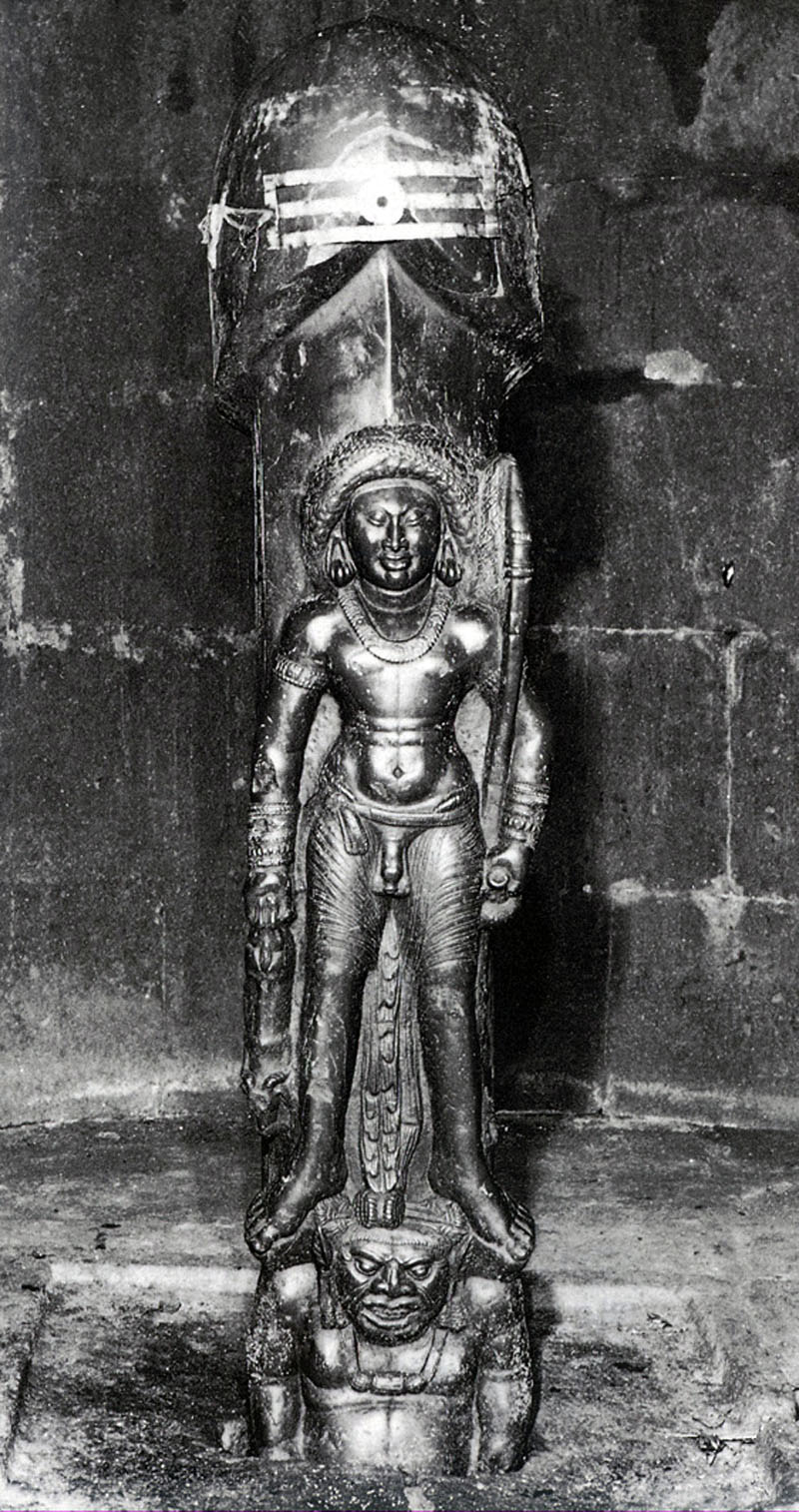A phallic sculpture in the tradition of the Shaiva cult, dated to several points between the third century BCE and first century CE, the Gudimallam stone lingam is located in the Parasurameshwara temple of the Gudimallam village in the Chittoor district of Andhra Pradesh. It was recovered in 1903 by the archaeologist TA Gopinath and is the oldest lingapitham (or ‘linga mounted on a pedestal’) and possibly the second oldest linga associated with the Hindu deity Shiva. The lingam is designated as a Parasurameshwara – perhaps as a tribute to Shiva’s devotee Parasurama – and measures 1.5 metres in height and 0.3 metres in diameter, resting on a low quadrangular plinth set in the floor. Although it has not been definitively dated or had its provenance established, it is widely agreed that this is the earliest known example of a fully representational and non-conventional lingam, bearing a distinct, high relief image of Shiva carved into its front.
It is carved from highly polished, reddish-brown rock and is enclosed in an apsidal sanctum, or garbhagriha. Rising up from a quadrangular pedestal, or pindika, carved in the floor, the lingam is demarcated into a seven-sided shaft and a terminal segment rendered to be anatomically identical to the glans penis. There are two figures carved in relief on the lower-front side: the figure of Shiva stands on the shoulders of a crouching, dwarf-like figure – thought either to be the demon Apasmara Purusha from popular Shaiva iconography, the mischievous servitory gana of Shiva, or a yaksha similar to those depicted on the stupas at Bharhut and Sanchi in Madhya Pradesh.
The Shiva sculpture carved on the front is rendered in great detail, displaying a braided and curled coiffure, which later evolved into the characteristic jatamukuta; a multitude of elaborate ornaments decorating his neck, ears and arms; a belt or girdle with a tassel; and a thin fabric draped around his waist. This archetypal figure is depicted as two-armed — with a ram or antelope in the left hand and a small pot of water or ghee in the right — and with a battle-axe resting on his left shoulder. The ornamentation on the deity is repeated, but to a lesser extent, on the crouching figure, depicted with prominently pointed conch-shaped ears and fish-shaped feet.
The dating of the sculpture has been a point of debate, especially due to the unconfirmed date of the temple that houses it, which is thought to have been built and rebuilt over multiple periods. It is known that the expanded temple is of Chola provenance, as attested to by a Chola inscription on-site that names the deity as well as dates the temple construction to 1126 BCE. However, evidence of barrel-roofing over the garbagriha, suggests an earlier date, of around the ninth century, for the shrine itself. Further complicating this assertion is the discovery of fragments of railing around the lingam, which has led to speculations of an even earlier origin. Some scholars compare these railings to early Buddhist vedika railings, such as those enclosing the second-century stupas at Bharhut and Sanchi.
The characterisation and dating of the lingam has also been challenging due to the absence of similar sculptures in the region during this time. Gopinatha Rao draws similarities to the seventh-century deity Virupaksha – who is so named for his “slanting eyes,” – suggesting that the depiction of the Parashurameshwara deity at Gudimallam, which also posses this feature, may have been a precursor to Virupaksha at Hampi. Further, his comparison of the physiognomy of the crouching figure on the linga to the yakshas at Bharhut and Sanchi suggests an age of approximately 2,200 years for the lingam. Other scholars has inferred that the figure represented may have folk and indigenous roots because of its distinctive features — a broad, squat physique, thick curly hair, high cheekbones and thick lips — therefore suggesting an indigenous and local antecedent to the Indo-Aryan (Brahmanical) cult of Shiva.
Although a much-debated subject of historical and archaeological analysis, the Gudimallam stone lingam is especially important because it is the only one of its kind in all of India.







